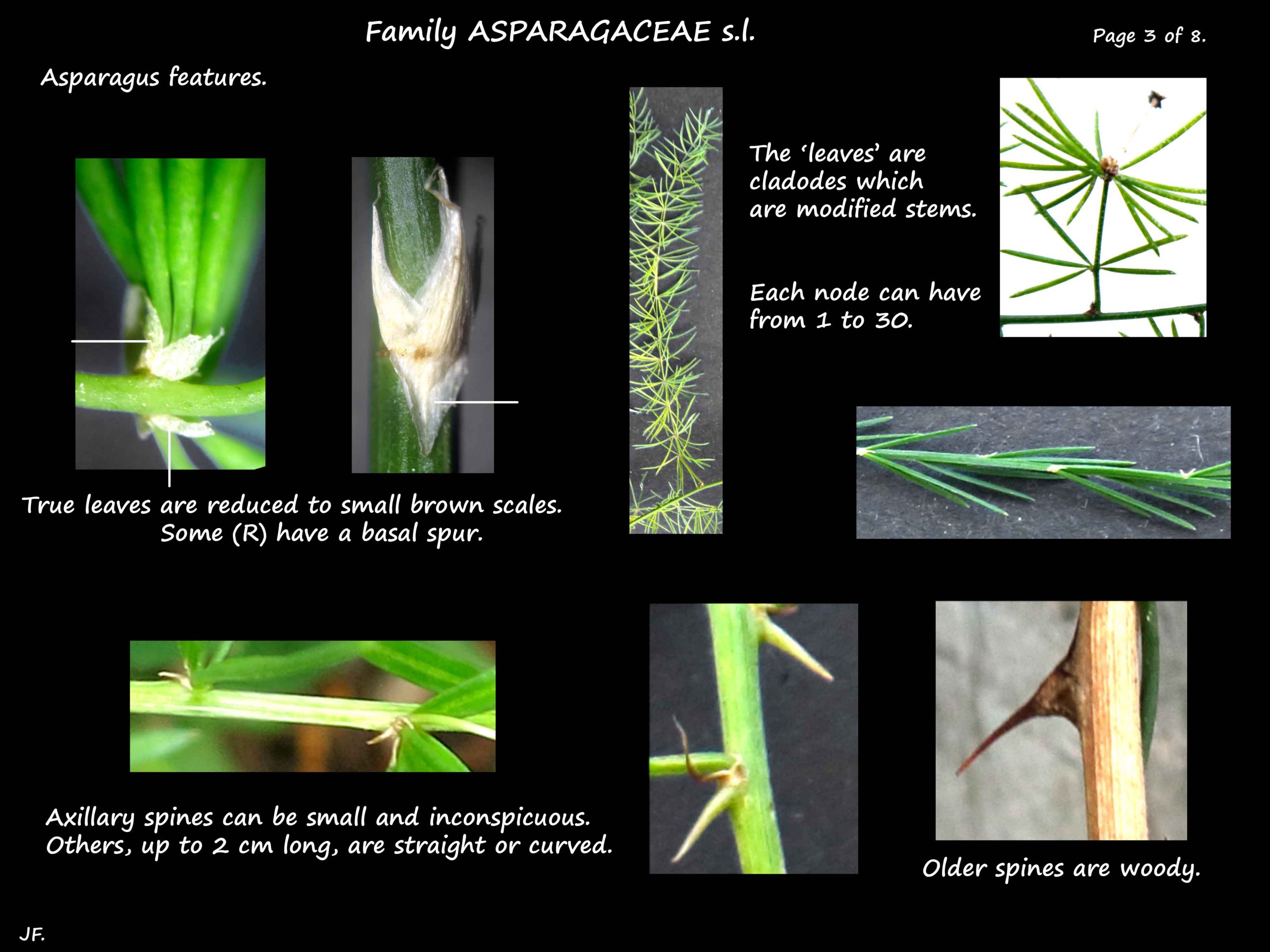Asparagus.
Family Asparagaceae s.l. > Subfamily Asparagoideae.
The genus has around 100 species (60 to 150).
Some have suggested a name change to Prosparagus but this is not generally accepted.
Australia has 5 – 9 species of which A. racemosus is native and the others are naturalised.
Most can be found in S. E. Queensland including the commercial A. officinalis.
Some have been used as garden plants are are now invasive weeds in many areas.
Some produce edible stems and others are used by florists.
Mostly perennial they can be herbs or branching, erect, climbing or scrambling shrubs.
Stems, up to 20 m long, may have axillary spines.
Roots are a dense, fibrous mass and stems arise from fleshy rhizomes or tubers.
New shoots, edible in some species, grow from the rhizomes each year.
The true leaves are reduced to small scales.
What look like leaves are modified, photosynthetic stems or cladodes (cladophylls).
Species seen in Australia can have from 1 up to around 20 in each leaf axil.
They are commonly under 2 cm long a few are up to 12 cm.
Most are needle-like and under 3 mm wide but some, such as A. asparagoides have wider,
oval cladodes that more resemble ‘normal’ leaves.
Overall the foliage looks fern-like and many species are known as Asparagus ferns.
The axillary, solitary or clustered flowers, are mostly unisexual.
Male and female flowers are usually found on separate plants.
The small, bell-shaped flowers are white, greenish, yellow or pinkish.
Flower parts are in 3’s.
The perianth has 2 whorls of 3 free parts that are often similar – tepals.
There are 6 stamens with anthers opening via slits.
The superior ovary has 3 locules, a single style with a round or slightly 3-lobed stigma.
The fruit are berries about 8 mm wide with 1 or more black seeds.
The berries ripen to red, orange or black.
J.F.









